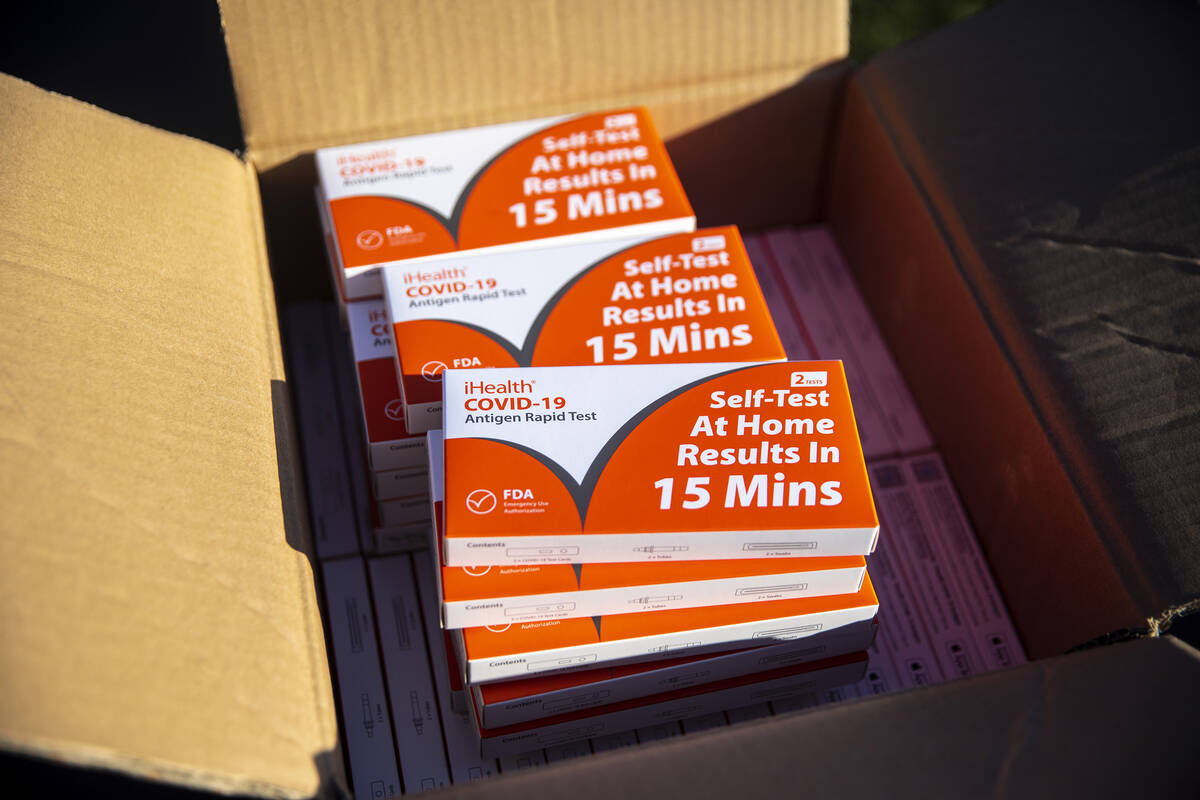Sick but ‘negative’: Officials warn of misleading COVID rapid tests
LOS ANGELES — At-home coronavirus screening has become a way of life for many Californians, but some medical experts are now cautioning that one test may not be enough to definitively determine whether someone is infected.
Health officials stress that at-home tests are a vital and accurate way of tracking COVID-19 infections but an initial negative test doesn’t mean people are out of the woods.
The U.S. Food and Drug Administration suggested last week that those checking to determine whether they are infected should use multiple tests over a period of days.
“When you perform an at-home COVID-19 antigen test and you get a positive result, the results are typically accurate,” government officials wrote in a public statement. “However, if you perform an at-home COVID-19 antigen test, you could get a false negative result.”
Because of this, the agency “recommends repeat testing following a negative result, whether or not you have COVID-19 symptoms.”
The risk of misleading results seems to be higher among symptomatic people infected with the latest dominant omicron subvariant, BA.5, compared with earlier versions. This, experts say, further illustrates the importance of follow-up testing.
“If your first home antigen test is negative, we recommend repeating it in 24 to 48 hours,” Dr. Ralph Gonzales, a University of California, San Francisco associate dean, said during a recent campus town hall.
Gonzales said he has noticed an additional lag in how long it takes a rapid test to turn positive following the onset of symptoms — especially early on.
Some people aren’t testing positive using rapid tests until four or five days after they start to show symptoms, according to UC San Francisco infectious diseases expert Dr. Peter Chin-Hong.
“That’s very common these days,” he said.
At-home COVID-19 rapid tests are expected to detect a coronavirus infection at least 80% of the time, according to the FDA. By contrast, a lab-based PCR test is generally expected to detect the virus 95% of the time someone is infected.
But PCR tests can take a day or longer to process, while rapid test results are available within 15 minutes.
If you have COVID-19 symptoms and get a negative rapid test result, the FDA suggests testing again 48 hours later. If the second test is negative and you’re still concerned your symptoms are caused by COVID-19, the FDA suggests either a third rapid test or a lab-based PCR test.
“People should use multiple tests over a certain time period, such as two to three days, especially when the people using the tests don’t have COVID-19 symptoms,” the agency said in its statement. “The FDA is highlighting the continued need for repeat, or serial, testing when people get a negative result with an at-home COVID-19 antigen test, including recommending additional testing over a longer period of time.”
There are a couple of reasons why it’s taking longer from the onset of symptoms for some people to test positive using a rapid kit.
The omicron variant family is generally more likely to begin infection in the throat, Chin-Hong said, meaning “it takes a while to go up to the nose.”
So, if you’re just swabbing your nose during a test “and you have a sore throat, it may mean that you’re not getting virus there yet,” he said.
Another possible reason is that the immune systems of people who have been vaccinated and boosted are more likely to recognize an exposure to the coronavirus quickly, triggering symptoms early as a way to fight off disease but before there are levels of virus in the body high enough for a rapid test to detect.
Before widespread vaccinations, the immune system took a relatively long time before recognizing the coronavirus and triggering an immune response.
But “in a vaccinated and boosted person, they already have immune cells floating around to recognize the enemy. And when you get infected, the immune system activates much faster,” Chin-Hong said. “Now, the immune system is saying, ‘Hey, something’s up!’ and you start to feel ill, but actually, there is not much virus around.”
As a result, in a vaccinated and boosted person, the body can quickly issue its own alarm indicating COVID-19 has arrived, but it can take longer for enough of the virus to be detectable by a rapid test.
Whatever the reason, any potential delay in confirming coronavirus infection is all the more reason for residents to abide by one of the most often-cited public health mantras over the past two and a half years: Stay home if you feel sick.
“If you have symptoms of respiratory illness, if you have symptoms that you think may indicate that you might have COVID, please, please, please stay home,” said Los Angeles County Public Health Director Barbara Ferrer. “Use those rapid tests; they’re generally fairly reliable. But if you still have symptoms, and you’re testing negative, go ahead and get a PCR test.”
If you do get a negative PCR test result and are still symptomatic, Ferrer said you should contact your healthcare provider.
“But no matter what you’re infected with — until you’re better, you should not expose others,” she said during a recent briefing.
If you don’t have COVID-19 symptoms but believe you’ve been exposed to the coronavirus, the FDA suggests getting at least three negative rapid test results, testing every 48 hours. If you’re still concerned, you can take a fourth rapid test after another 48 hours or get a PCR test.
Some people might say they’ve repeatedly tested negative, but they are actually taking a rapid test at, say, 10 a.m., and then at 2 p.m., which doesn’t really help people figure out their true infection status, Ferrer said. Testing 24 to 48 hours later provides more meaningful information, she said.
“Diagnostic testing remains a cornerstone of our nation’s fight against COVID-19,” the FDA said in its statement. “At-home COVID-19 antigen tests, while not perfect, provide a fast and convenient COVID-19 testing option.”










































